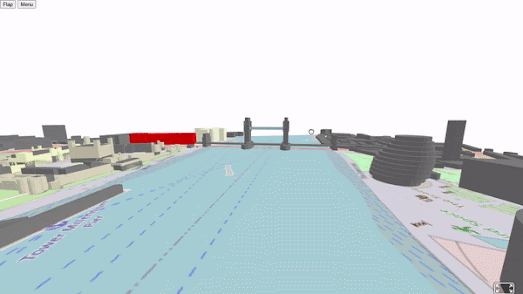Сообщения
Сообщения за июль, 2024
The Best Graphics Team in the World
- Получить ссылку
- X
- Электронная почта
- Другие приложения
Rat-Town, Massachusetts
- Получить ссылку
- X
- Электронная почта
- Другие приложения
AI-Powered Satellite Search
- Получить ссылку
- X
- Электронная почта
- Другие приложения
The US Road Fatality Map
- Получить ссылку
- X
- Электронная почта
- Другие приложения
Mapping Power Outages in Kiev
- Получить ссылку
- X
- Электронная почта
- Другие приложения
Your Daily Map Trivia Game
- Получить ссылку
- X
- Электронная почта
- Другие приложения
The Catalan GeoGuessing Game
- Получить ссылку
- X
- Электронная почта
- Другие приложения
Tracking American Spies in Germany
- Получить ссылку
- X
- Электронная почта
- Другие приложения
The Retro Gamer's Map
- Получить ссылку
- X
- Электронная почта
- Другие приложения
Virtual Reality OpenStreetMap
- Получить ссылку
- X
- Электронная почта
- Другие приложения
10 Million Street Views
- Получить ссылку
- X
- Электронная почта
- Другие приложения
30 Days of Crashes in New York City
- Получить ссылку
- X
- Электронная почта
- Другие приложения
The 2024 European Election Map
- Получить ссылку
- X
- Электронная почта
- Другие приложения
Battles of World War II & American Wars
- Получить ссылку
- X
- Электронная почта
- Другие приложения
Your Urban Heat Island Score
- Получить ссылку
- X
- Электронная почта
- Другие приложения
Trains, Balloons and Automobiles
- Получить ссылку
- X
- Электронная почта
- Другие приложения
The D-Day Map Room
- Получить ссылку
- X
- Электронная почта
- Другие приложения
Your Future Climate Twin
- Получить ссылку
- X
- Электронная почта
- Другие приложения
Europeans Profiting from American Deaths
- Получить ссылку
- X
- Электронная почта
- Другие приложения
John Snow's Proximity Mapping
- Получить ссылку
- X
- Электронная почта
- Другие приложения
AI Satellite Search
- Получить ссылку
- X
- Электронная почта
- Другие приложения
France Defeats the Far-Right
- Получить ссылку
- X
- Электронная почта
- Другие приложения
The Car Free Cities Atlas
- Получить ссылку
- X
- Электронная почта
- Другие приложения
2024 UK Election Maps
- Получить ссылку
- X
- Электронная почта
- Другие приложения
The Riskiest Places to Live in America
- Получить ссылку
- X
- Электронная почта
- Другие приложения
Climate Change by Electoral District
- Получить ссылку
- X
- Электронная почта
- Другие приложения
Tory Candidates Violently Attacked
- Получить ссылку
- X
- Электронная почта
- Другие приложения
France Surrenders to Facism
- Получить ссылку
- X
- Электронная почта
- Другие приложения



























